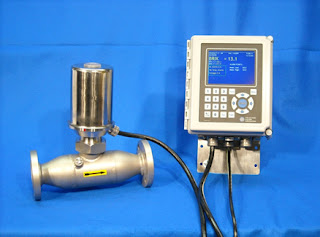 |
| DSA E-Scan Dissolved Solids Analyzer |
The refractive index of a substance is dependent, in part, upon temperature and the wavelength of light used in the measurement. Common applications include Brix testing for sucrose level, along with others in the beverage, pulp and paper, chemical, flavor, and fragrance industries. Refractometry is used as a quality control measurement, to assure uniformity among product batches.
Manual refractometers have been available for many years and require human observation and interpretation of a scale reading to obtain a refractive index. Automatic, as well as in-line units are available today that provide uniform accuracy and faster sample processing.
The DSA E-Scan, manufactured by Electron Machine, is an automatic, bench-top critical angle refractometer with a digital readout and temperature-controlled sample chamber. Its compact size and rugged design permit operation in the field and in areas with limited space. The unit provides fast and accurate refractive index measurements of sample liquids.


